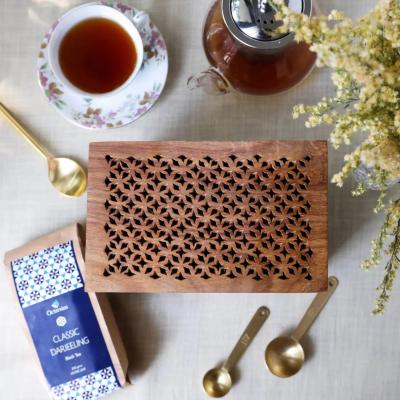Notifications
Darjeeling tea, often referred to as the "Champagne of Teas," is one of India's most prized and iconic beverages. Grown in the lush hills of the Darjeeling district in West Bengal, this tea is renowned for its unique flavor, aroma, and heritage. Its delicate muscatel notes and bright golden hue make it a favorite among tea connoisseurs worldwide.
The exclusivity of Darjeeling tea lies in its:
Geographic Origin:
The tea is cultivated at altitudes ranging from 600 to 2,000 meters in the Himalayan foothills, where the cool climate, rich soil, and misty weather create ideal growing conditions.
Muscatel Flavor Profile:
Darjeeling tea is celebrated for its distinct taste, often described as muscatel, with fruity, floral, and nutty undertones. This unique profile is nearly impossible to replicate outside the region.
Protected Status:
Darjeeling tea holds a Geographical Indication (GI) tag, ensuring that only tea grown in this region can bear the name "Darjeeling."
Darjeeling tea is available in several varieties, each offering a unique taste experience:
First Flush:
Second Flush:
Monsoon Flush:
Autumn Flush:
To enjoy the true essence of Darjeeling tea, follow these steps:
Ingredients:
Instructions:
Darjeeling tea not only delights the senses but also offers numerous health benefits:
Rich in Antioxidants:
Helps combat oxidative stress, promoting overall health.
Improves Digestion:
Its light tannins soothe the stomach and aid in digestion.
Boosts Immunity:
Regular consumption may strengthen the immune system.
Supports Heart Health:
Polyphenols in Darjeeling tea may reduce the risk of heart disease.
Enhances Mental Alertness:
Contains caffeine in moderate amounts, improving focus and energy.
Darjeeling tea is deeply rooted in India's history and culture. Introduced by the British in the 19th century, its cultivation has since become an integral part of India's tea legacy. The tea is now celebrated globally for its unmatched quality and continues to be a symbol of India's rich agricultural traditions.
Indian Darjeeling tea is more than just a beverage—it's an experience steeped in history, culture, and unparalleled flavor. Whether you savor a first flush for its light floral notes or a second flush for its muscatel richness, Darjeeling tea promises a journey of the senses. Brew a cup and let this Himalayan gem transport you to the misty hills of Darjeeling!
